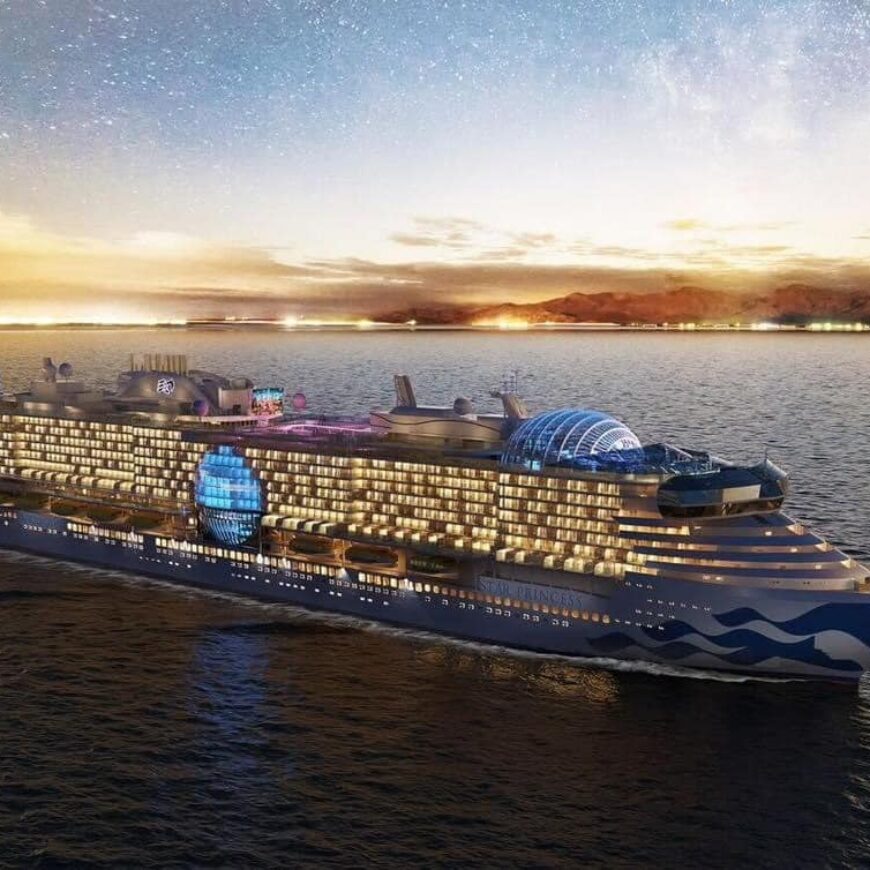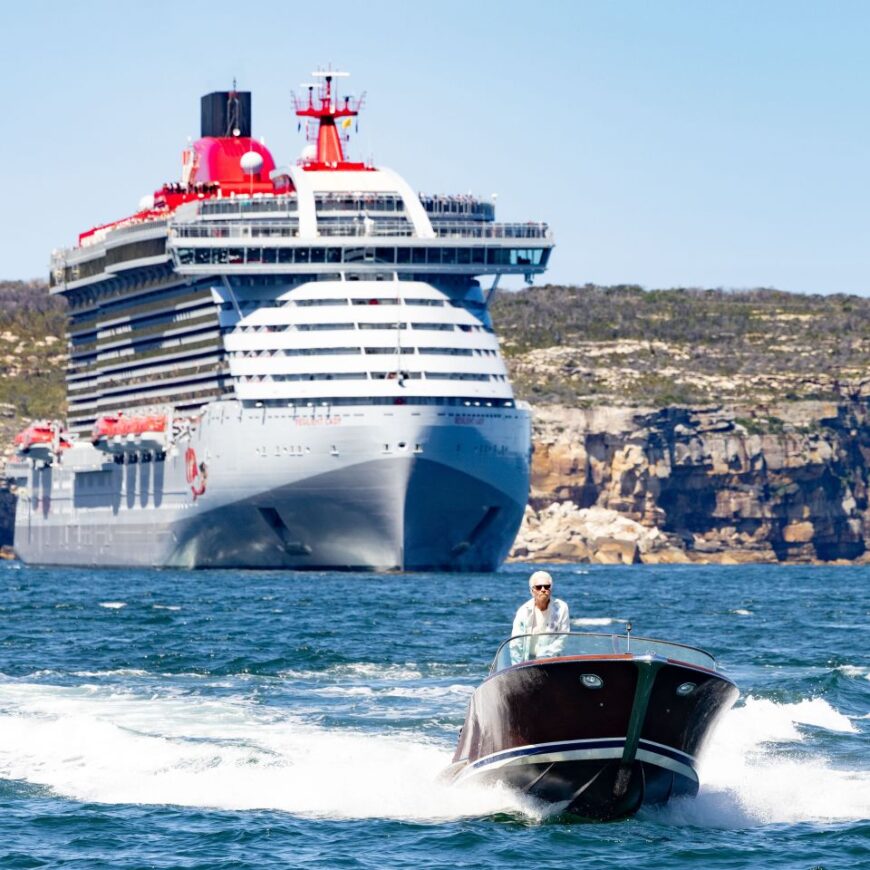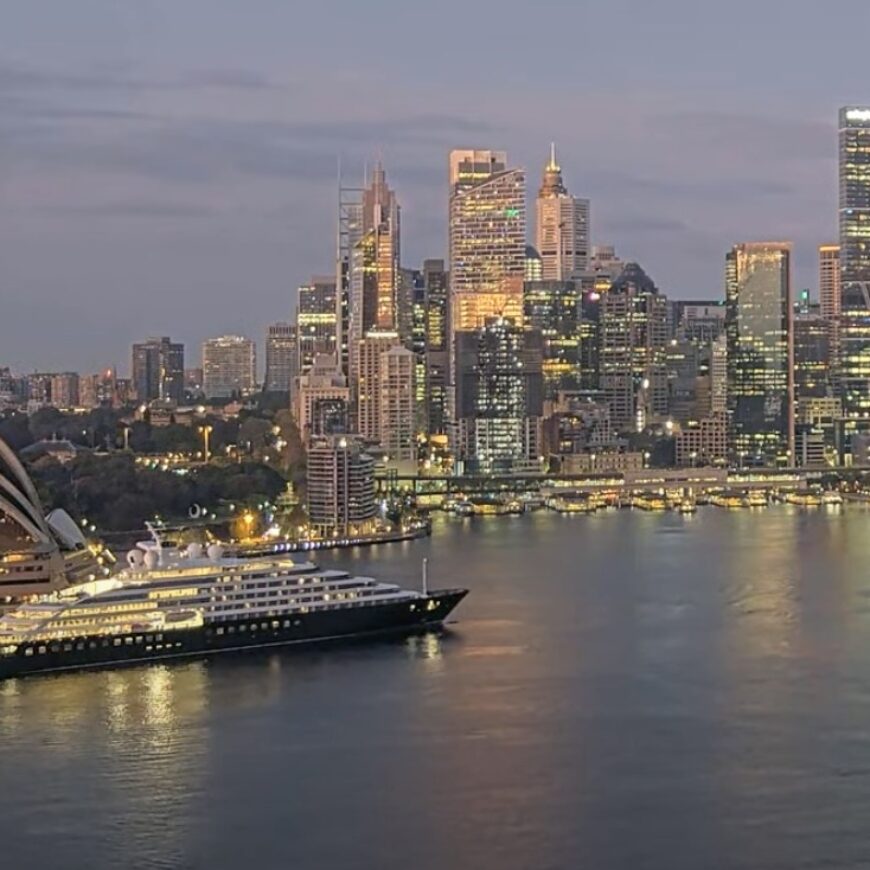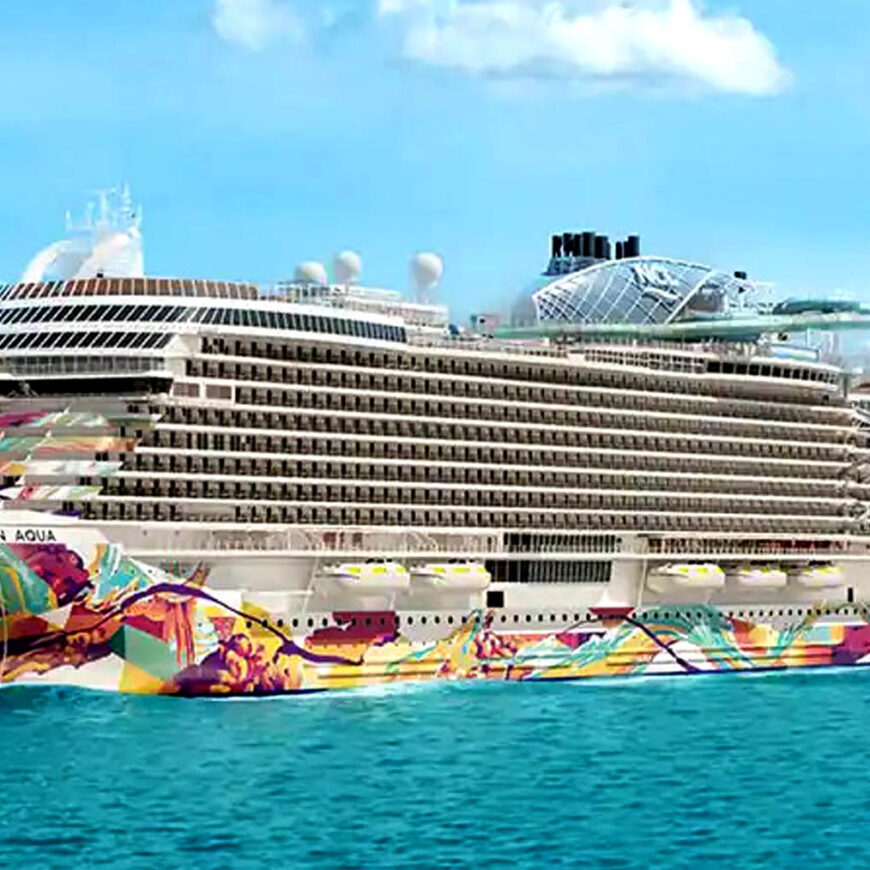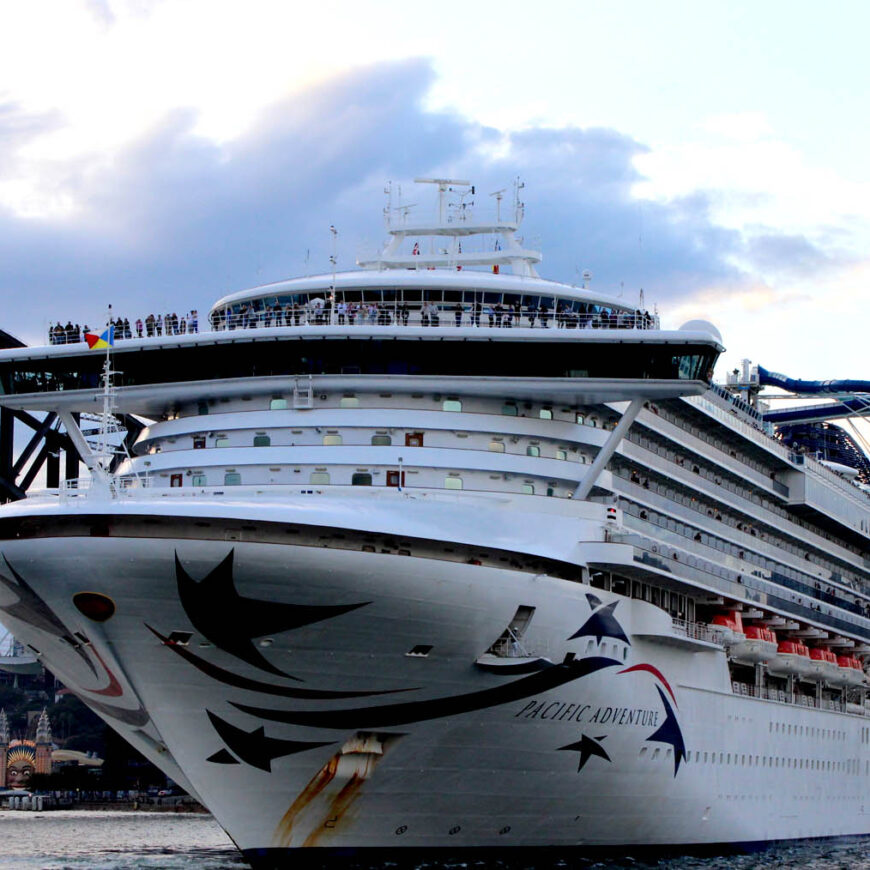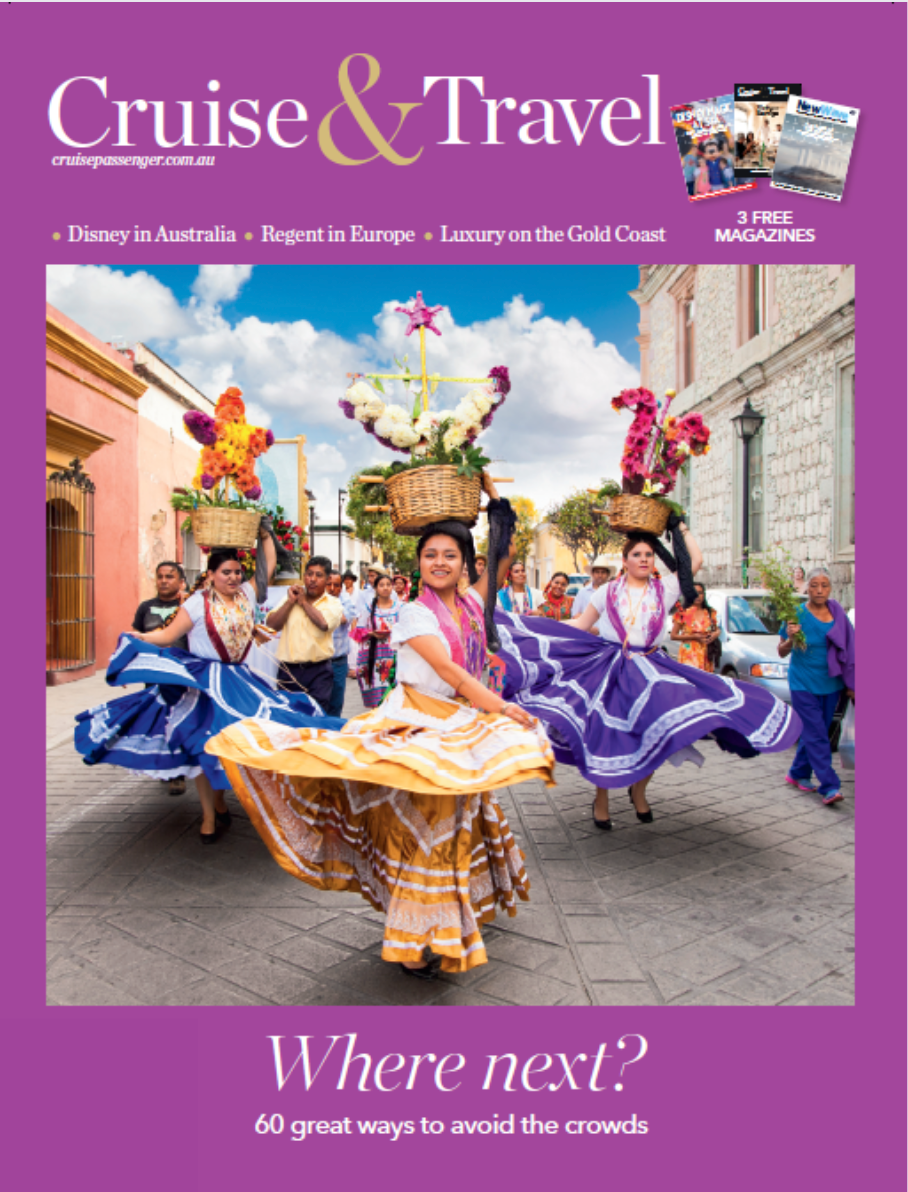Charting a greener course: How the cruise industry sails against climate change
Sustainable CruisingAs the allure of cruising continues to captivate adventurers worldwide, the industry finds itself navigating stormy waters of a different kind – the impact of climate change.
The World Meteorological Organization (WMO) declared 2023 the warmest year globally, with the global average near-surface temperature. Australia’s Bureau of Meteorology also confirmed that 2023 was the eighth-warmest year on record and the warmest since 2020.
According to Dr Simon Marsland, National Environmental Science Program Climate Systems Hub Leader, while speaking to the CSIRO, these rising temperatures have resulted in “climate extremes,” from wild weather and natural disasters like massive wildfires in Canada to ferocious fires in Southern Europe and Hawaii.
“2023 opened our eyes to new climate extremes, from massive wildfires in Canada to ferocious fires in Southern Europe and Hawaii,” he said. “Cyclone Jasper’s torrential and extended rains to the devastating rush of the Libyan floods. These events are the signature of more hazardous weather under global warming.”
While cancellations, delays, and rerouting are par for the course, cruise lines and their enormous ships must prepare themselves and their cruise passengers for the coming climate change storm.
From advanced weather forecasting technologies to flexible itineraries that can adapt on the fly, cruise lines are finding new ways to mitigate the financial toll of disruptions. These include investing in resilient infrastructure and emergency response protocols, as well as taking a more sustainable approach to the cruise industry through new fuels and net-zero commitments.

Rising tides, rising challenges
“Climate change is about much more than temperatures,” said WMO Secretary-General Celeste Saulo. She added that the unprecedented ocean warmth, glacier retreat, and Antarctic sea ice loss witnessed in 2023–the lowest on record–are cause for particular concern.
According to Dr Marsland, around a million square kilometres of the usual sea-ice cover was missing across the winter, an area the size of the Murray Darling Basin.
As sea levels rise, ports face an uncertain future—but cruise lines are not content to stand idly by as their lifelines are threatened. From retrofitting ports with flood barriers and elevated infrastructure to investing in sustainable coastal development projects, cruise lines are rising to the challenge with bold solutions.
By embracing adaptive measures and advocating for comprehensive coastal management strategies, they safeguard their operations and lead the charge in building climate-resilient communities.
With a keen eye on sustainable practices, cruise lines are reducing their carbon footprint, contributing to the broader effort to mitigate climate change’s impacts on coastal regions worldwide. Even river cruise operators like Avalon Waterways and Uniworld are getting on the sustainability efforts.
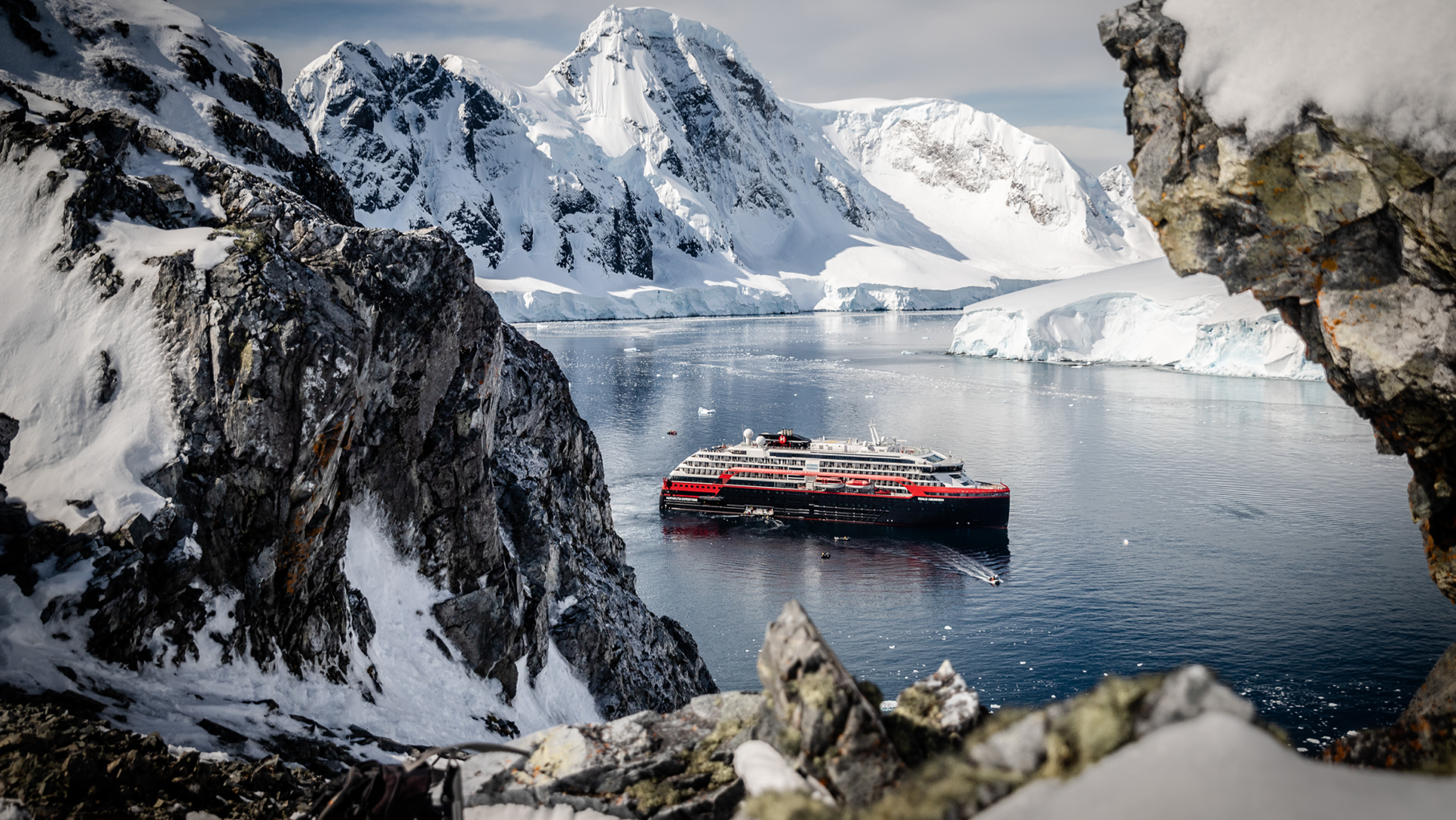
Cruise Destinations in Flux
Amid the shifting sands of destination attractiveness, cruise lines navigate a delicate balance between preservation and profit. By supporting conservation initiatives and engaging in sustainable tourism practices, they protect the fragile ecosystems of beloved destinations and ensure their long-term viability.
From collaborating with local communities to develop sustainable tourism plans to invest in marine conservation efforts, cruise lines are forging partnerships that transcend profit margins. As they seek out alternative destinations less impacted by climate change, they’re not just diversifying their offerings—they’re safeguarding the very soul of the industry for generations to come.
However, the impact of climate change on natural disasters, such as floods, tropical cyclones, extreme heat and drought, and associated wildfires, could cause some destinations to be removed from itineraries altogether.
According to Dr Chris Chapman, Ocean Dynamics Team Leader, who also spoke to the CSIRO, “Many regions of the globe experienced marine heatwaves with disastrous effects. For example, coral reefs in the Caribbean Sea and Eastern Pacific suffered widespread bleaching due to sustained marine heatwaves.”
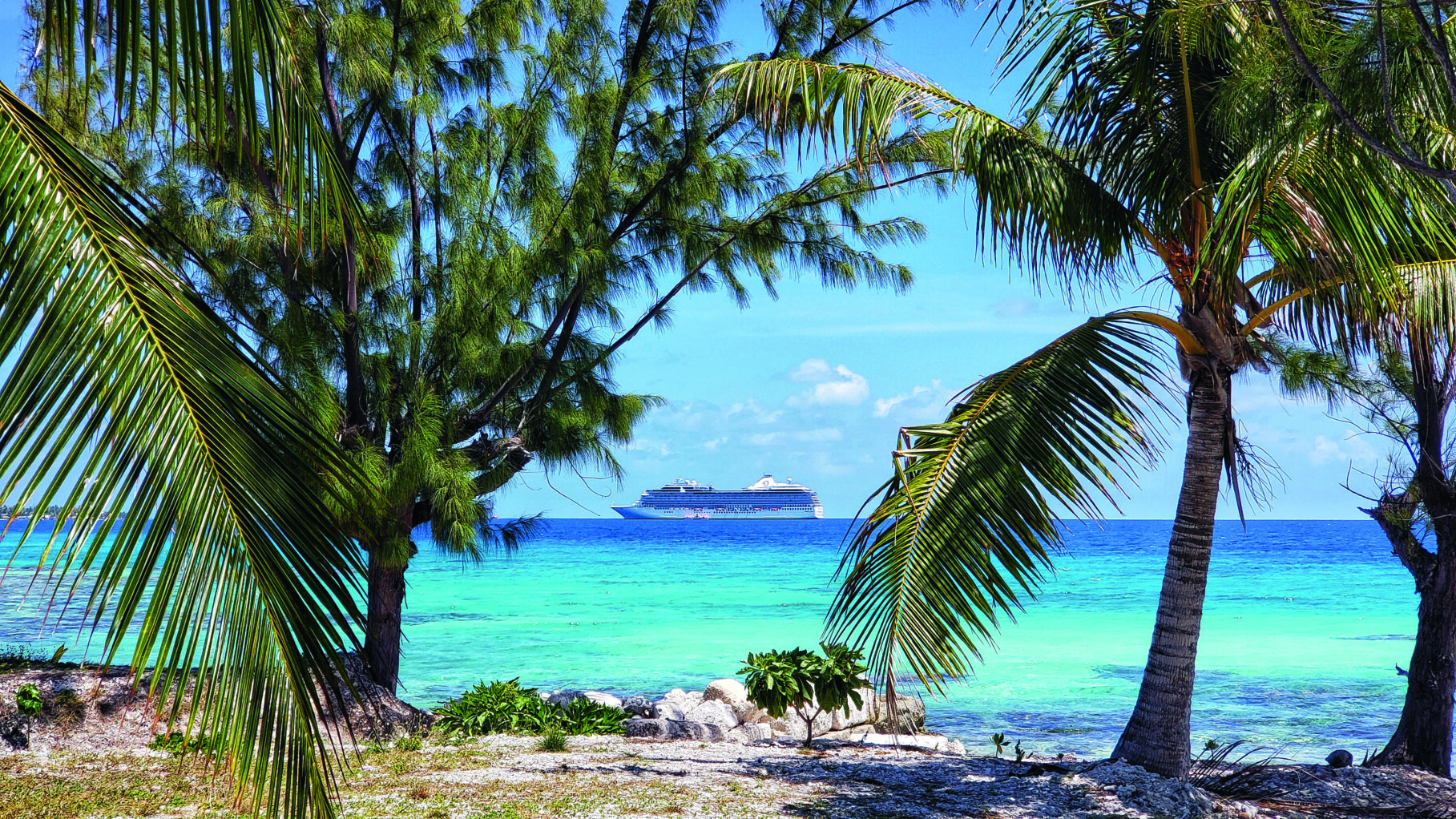
Innovative onboard technologies: Riding out the storms
But what about when the clouds gather, and the winds howl?
Cruise lines have equipped themselves with state-of-the-art technologies to navigate safely through turbulent weather. From sophisticated weather forecasting equipment to dedicated onboard meteorologists, like Royal Caribbean’s James Van Fleet, cruise lines are on the frontline of weather monitoring.
Cruise operators track their vessels in real-time, utilising multi-million-dollar command centres, such as Carnival Cruise Line’s Fleet Operations Center in Miami, ensuring swift responses to changing weather patterns. Modern ships boast stabilisation technologies to counter rough seas, while agile itinerary adjustments keep guests safe and comfortable.
Should adverse weather be unavoidable, transparent communication and guest-centric decision-making guide cruise lines as they navigate through uncertainty. Whether rerouting to sunny shores or extending the voyage by a day, passenger safety and satisfaction remain paramount.
These technological advancements enhance passenger safety and contribute to the industry’s broader sustainability goals. By enabling smoother sailing and more efficient operations, these technologies help reduce fuel consumption and emissions, aligning with the industry’s commitment to environmental stewardship.
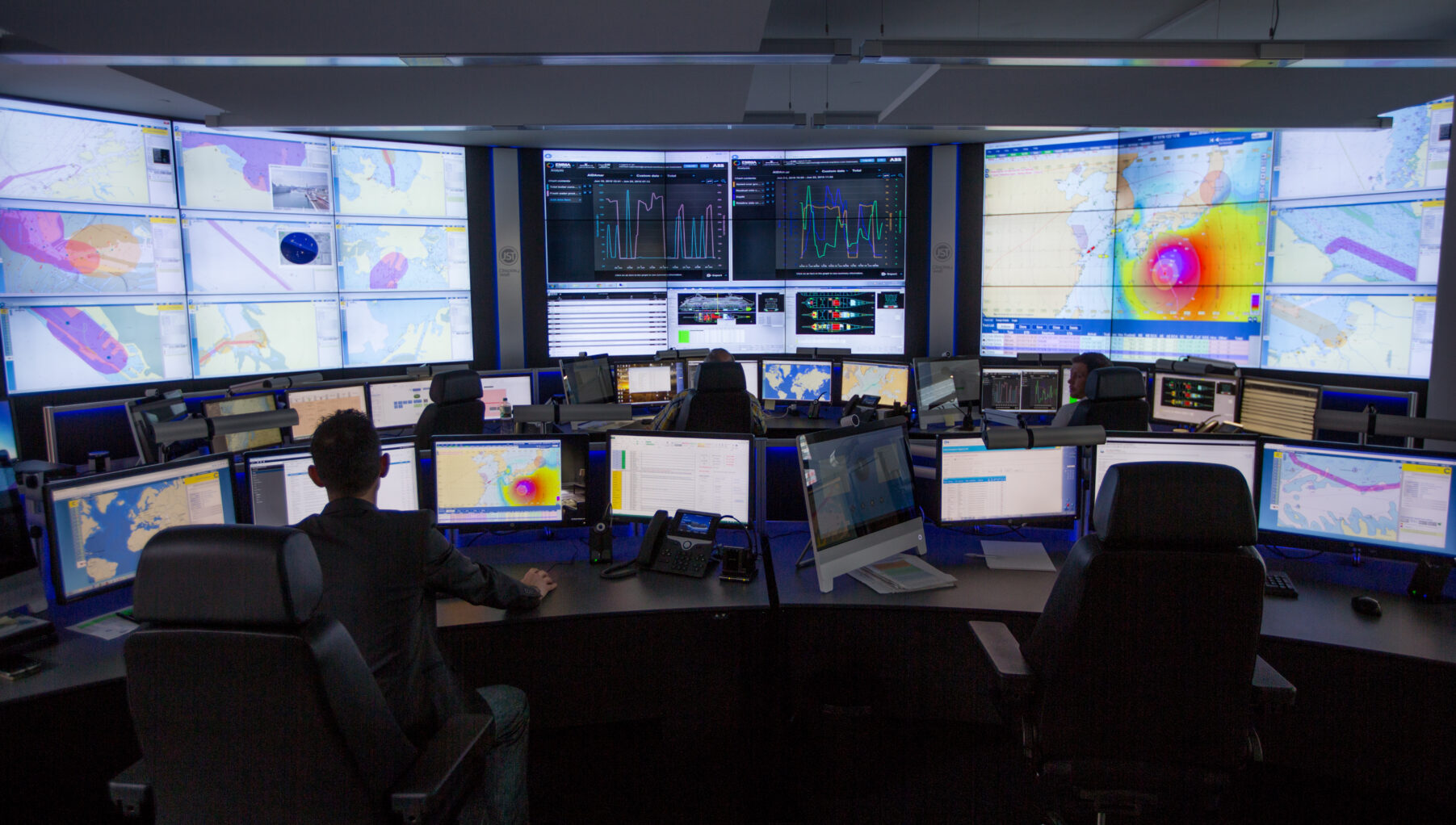
Industry-wide initiatives towards net-zero carbon cruising
In 2022, the Cruise Lines International Association (CLIA) unveiled its plans to achieve net-zero carbon cruising by 2050. As CLIA president and CEO, Kelly Craighead, emphasised “innovation and engineering are at the heart of the industry’s vision for net-zero carbon cruising”.
With a commitment to environmental stewardship, CLIA is investing billions in incorporating cutting-edge technologies and accelerating the development of sustainable marine fuels. These initiatives–adopting engines capable of utilising sustainable marine fuels and enabling shoreside electricity connectivity–are seen as fundamental steps towards decarbonising global shipping. Kelly affirmed that the CLIA is not just envisioning the future but actively working towards it.
At the forefront of this movement stands CLIA, representing the global cruise industry’s collective determination to reduce its carbon footprint. A staggering investment of over $25 billion in new vessels equipped with advanced environmental technologies underscores the industry’s dedication to exceeding international environmental standards.
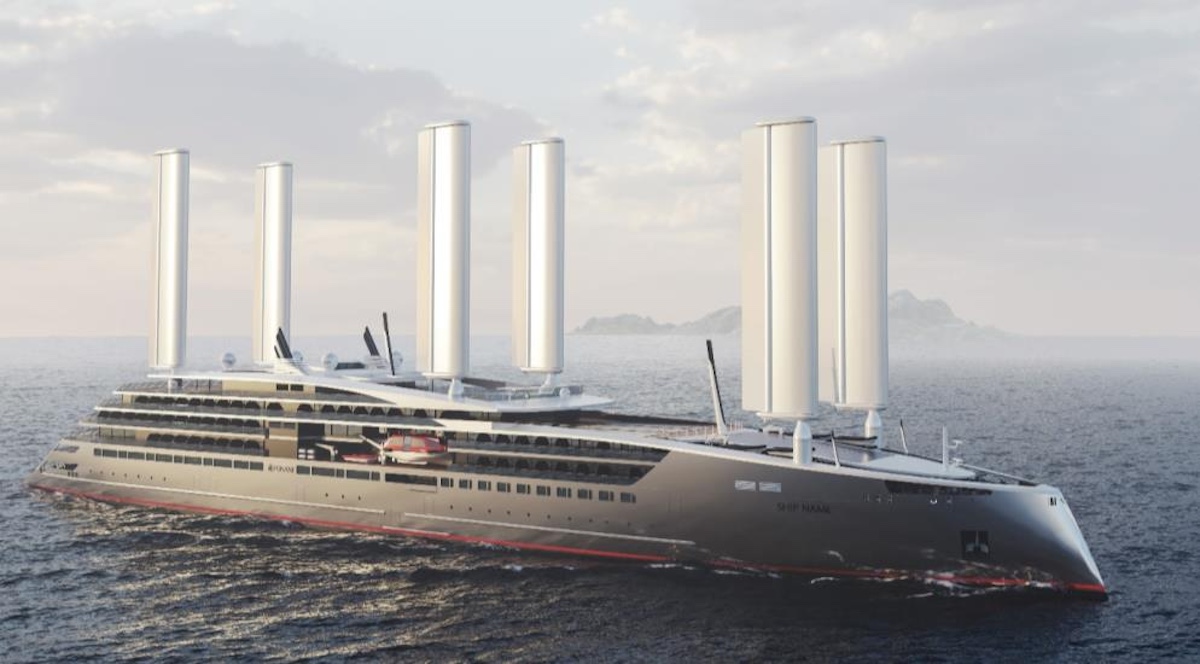
Technological innovations driving sustainable cruising
One such advancement is shoreside power capability, which allows ships to power down engines while at berth, thus significantly reducing emissions. Adopting liquefied natural gas (LNG) as a fuel source marks a pivotal shift, with particulate matter emissions potentially reduced by up to 100%. Furthermore, CLIA’s commitment extends to joining the Global Maritime Forum’s Call to Action for Shipping Decarbonization, aiming to make zero-emission vessels and fuel the norm by 2030.
A notable stride towards sustainability is the increasing integration of zero-emission propulsion technologies. Over 15% of ships set to launch in the next five years will boast fuel cells or batteries. Impressively, 85% of CLIA-member ships scheduled for launch by 2028 will have the capability to plug into shoreside electricity, thereby drastically reducing emissions during berthing.
Implementing advanced wastewater treatment systems further underscores the industry’s dedication to preserving oceanic ecosystems. It ensures that cruise operations mirror the environmental standards of leading shoreside treatment plants.
The industry’s commitment to a sustainable future is evident through tangible actions. Notably, Carnival, among the 500 signatories to the Glasgow Declaration on Climate Action in Tourism, has pledged to halve emissions by 2030 and achieve net-zero emissions by 2050.
Carnival’s proactive stance is further highlighted in the World Travel and Tourism Council’s Net Zero Roadmap for Travel and Tourism, showcasing commitments to significant reductions in CO2 emissions and particulate matter by 2030.
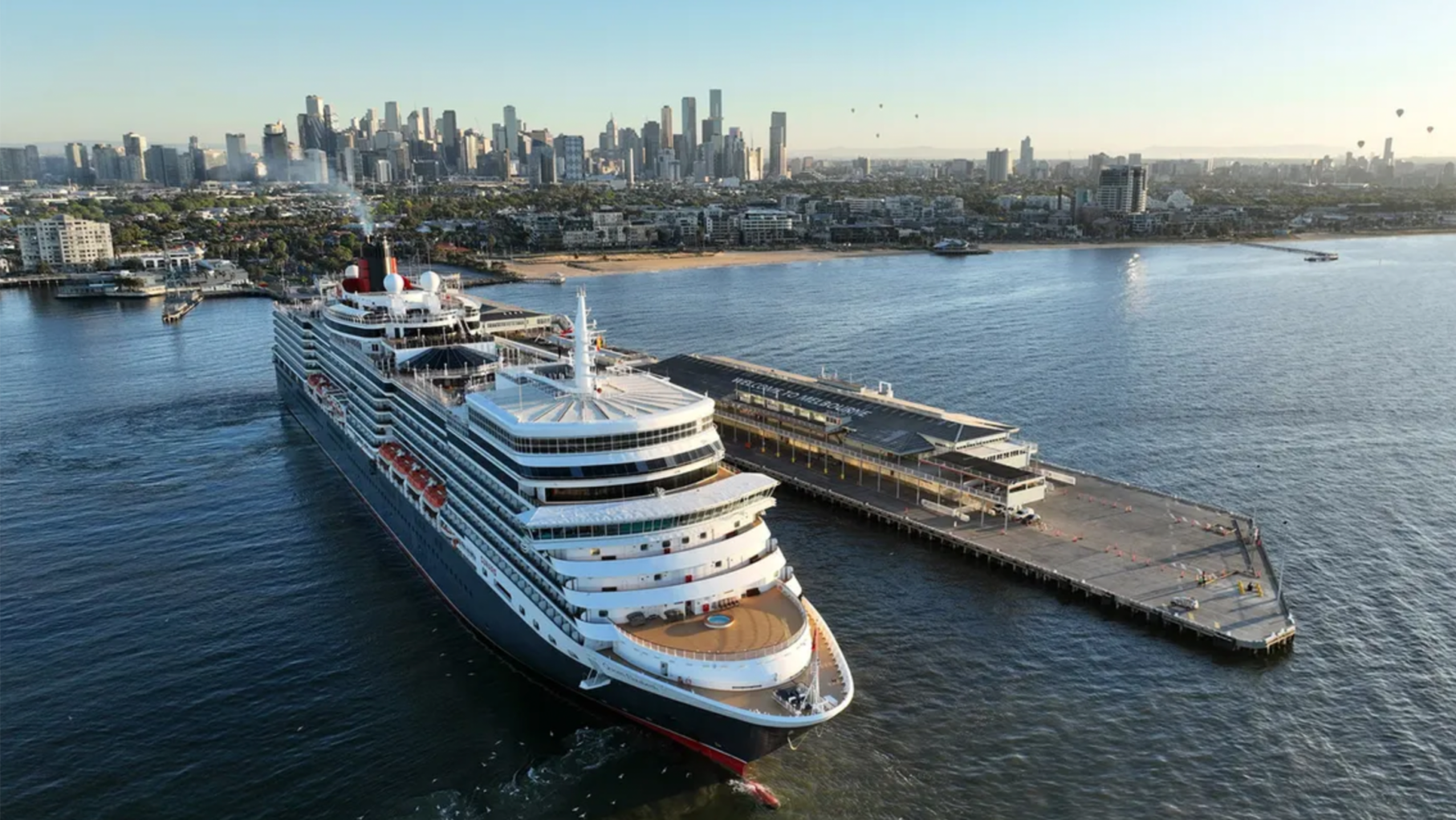
Pioneering the path to sustainability
As cruise lines navigate the waters of climate change, their commitment to sustainability remains steadfast. These innovative onboard technologies are just one aspect of the industry’s multifaceted approach to environmental responsibility.
Among the sustainable and eco-friendly future trailblazers stands Hurtigruten, a Norwegian travel company committed to sustainability. With ambitions as lofty as the peaks of its homeland, Hurtigruten aims to debut the world’s first zero-emissions cruise ship by 2030.
Already, they’ve hoisted their sails towards this goal, launching the world’s first hybrid battery electric-powered cruise ship. But their dedication doesn’t stop there. For example, single-use plastics have been banished from their operations, local and sustainable sourcing practices have been adopted, and crew uniforms are now fashioned from recycled materials.
Green Marine certification
Ponant, a French cruise line that offsets 100% of its emissions, is also joining the ranks of eco-cruise lines. Their crown jewel, Le Commandant Charcot, glides through the waves powered by liquid natural gas (LNG) and an electric battery, setting a standard of eco-friendliness without curbing the luxury. With a similar ban on single-use plastics like Hurtigruten and a close-knit collaboration with local communities, Ponant sails towards a greener horizon, earning accolades such as the prestigious Green Marine certification.
Norwegian cruise line Havila Voyages steers towards emission-free travel with its hybrid ships, boasting large batteries and LNG fuel. As technology evolves, so do their aspirations, eyeing a transition to hydrogen power. Their commitment to clean energy extends to recharging batteries with locally sourced hydropower, ensuring each voyage is a testament to environmental stewardship.
In Monaco, Star Clippers embraces the wind’s whisper, powering tall ships primarily by nature’s breath. Their commitment to sustainable cruising is not just wind talk. They have been certified by the Costa Rican Tourism Board for their sustainable practices, proving that cruising can be both traditional and environmentally conscious.

Cruising is booming Down Under
Australia, renowned for its pristine coastlines and azure waters, sets the stage for a maritime spectacle as over 1 million adventurers prepare to embark on cruises this summer. With the industry injecting a staggering $5.63 billion into the national economy, cruising’s economic prowess shines brightly on the horizon.
Anticipating a surge in maritime traffic, the Port Authority of New South Wales forecasts a 16% increase in cruise ship arrivals in Sydney and Brisbane alone—a testament to the enduring allure of cruising.
Carnival Australia, the nation’s largest cruise ship operator, is set to make a remarkable 846 domestic port calls in 2024, a substantial leap from the 575 recorded last year. Queensland emerges as a focal point for cruise holidays, driving demand for short cruises spanning two to five days.
Joel Katz, Managing Director of CLIA Australasia, paints a picture of significant expansion within the cruising sector. “We will see 81 cruise ships operating in Australian waters over the course of 2024, which is 14% more than last year,” he says.
“Many of these ships will be staying longer and offering more local sailings, which means Australia will welcome more than 3,700 port calls around the country—an 18% increase over last year,” Mr Katz continued.
Katz further underscores the burgeoning enthusiasm for cruising, both domestically and abroad. “The total cruise passenger capacity in Australia this year will be up by 42% over 2023, which reflects the huge passion Australians have for cruising and the strong overseas interest in sailing down under,” said Mr Katz.
To support this increase, cruise ships heading for White Bay Terminal in 2024 will be able to berth alongside the kerb and plug in renewable energy at Net Zero emissions.

Cruising internationally
As we set sail into 2024, the international cruise industry is poised for a wave of innovation and sustainability, with cruise lines committing billions of dollars to bolster the world fleet.
CLIA cruise lines are gearing up to welcome an impressive nine new vessels in the upcoming year, following the launch of 13 ocean cruise ships in 2023.
“The incoming fleet of new ocean ships illustrates the huge diversity of cruising styles available to today’s traveller around the world,” Mr Katz said.
“This year’s launches include a mix of contemporary ships, luxury ships and expedition ships from an equally broad range of cruise lines.
“Together, these ships will be among the most advanced and energy-efficient ships to have ever sailed, and their choices demonstrate why there is a cruising style to suit almost any taste,” Mr Kastz concluded.
Sailing towards a greener tomorrow
While the seas may be stormy, the cruise industry’s compass points unwaveringly towards a horizon where responsible travel isn’t just a choice but a way of life. Through continuous innovation and collective action, cruise lines are charting a course towards a brighter, more sustainable tomorrow.
So, hoist the sails and embark on a journey where every wave promises a brighter, more sustainable tomorrow.

